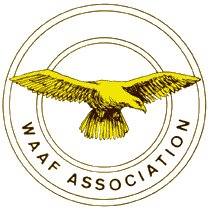The Royal Air Force (RAF)
was created in April 1918 along with the Women's Royal Air Force (WAAF).
Over the continuing months thousands of women were
recruited to work as clerks, fitters, drivers, cooks and storekeepers.
By the outbreak of the Second World War, in 1939, there were approximately
1,700 members. By 1943 there were around 180,000 members. Duties ranged
from catering to meteorology, transport and telephone switchboards,
codes and ciphers, intelligence, security and the operations room (tasks
included identifying enemy aircraft and plotting air and shipping movements
on battle maps).
The government sought women
to join the forces so that they could eventually replace men who were
sent off to fight. Subsequently conscription was introduced in 1941
for all single women aged between twenty and thirty. Women had then
to choose between working in the armed forces or industry and by 1942,
there were over 200,000 women serving in the Auxiliary Services. As
the war progressed the valuable contribution that women were making
to the war effort was recognised and as a result women were given more
dangerous work to do, such as crewing anti-aircraft guns and searchlights,
using radar and code-breaking enemy messages.
The WAAF
formed part of the RAF
"Members served in
upto 15 types of duty, ranging from catering to meteorology, transport,
telephony and telegraphy, codes and ciphers, Intelligence, Security
and Operation Rooms. The WAAF re-formed into the WRAF in 1949, and fully
integrated into the RAF in 1994."
Select one of the women below
to hear and read about their experiences in the WAAF
|
Phyllis
Bailey

|
A
WAAF serving during the Second World War, she was involved with
radar. As
a radar operator on the blind bombing system known as Oboe she
worked in association with the Pathfinder Force of Bomber Command
on raids mainly to the Rhur and flying bomb sites in Northern
France.
|
|
|
Kay
joined the WAAF in 1941- she initially trained to be a Charging
Board Operator but later went on to work with electronics and
circuitry. She worked in the hangers with the aircraft, charging
accumulators, servicing generators and looking after motors.
|
|
|
Gretta
Loveday, a WAAF, worked as a radar operator at Bawdsey after training
at Cranwell during the war. Her energetic and brave nature led her
into exciting work, she never forgot. Read her story in a touching
account written by her husband Knowler Edmonds. |
|
|
Lady
Renie Adams was a WAAF Officer chosen by Watson Watt from a group
of about two-hundred science graduates to work on this special project.
Lady Adams was sent on a training course in Loughborough to learn
about RDF (Radio Direction Finding) and then onto a CH Station (Chain
Home). Her written account follows her recollections of her time
as a WAAF officer at TRE Worth Matravers in Dorset. |
|
|
Pauline
Walkinton felt it was a privilege to be a Radar Operator in the
WAAF during World War II. Her written account follows the experiences
she had whilst based at Romney Marshes during the summer of 1940. |
|
|
Margaret
volunteered to join the WAAF in June 1944. This written account
follows her life and personal experiences in the WAAF as a Radar
Operator on CH and CHL Stations. During her service, Margaret was
stationed at various places in Britain, including both the most
northerly and southerly points on the mainland between 1944 and
1947. |
|
Anne
Stobbs

|
Anne
joined the WAAF as a Radar Operator. In her written account she
recalls the experience of being in the WAAF and remembers the immense
pride they all had at being involved in such a secret job as Radar. |


![]()


